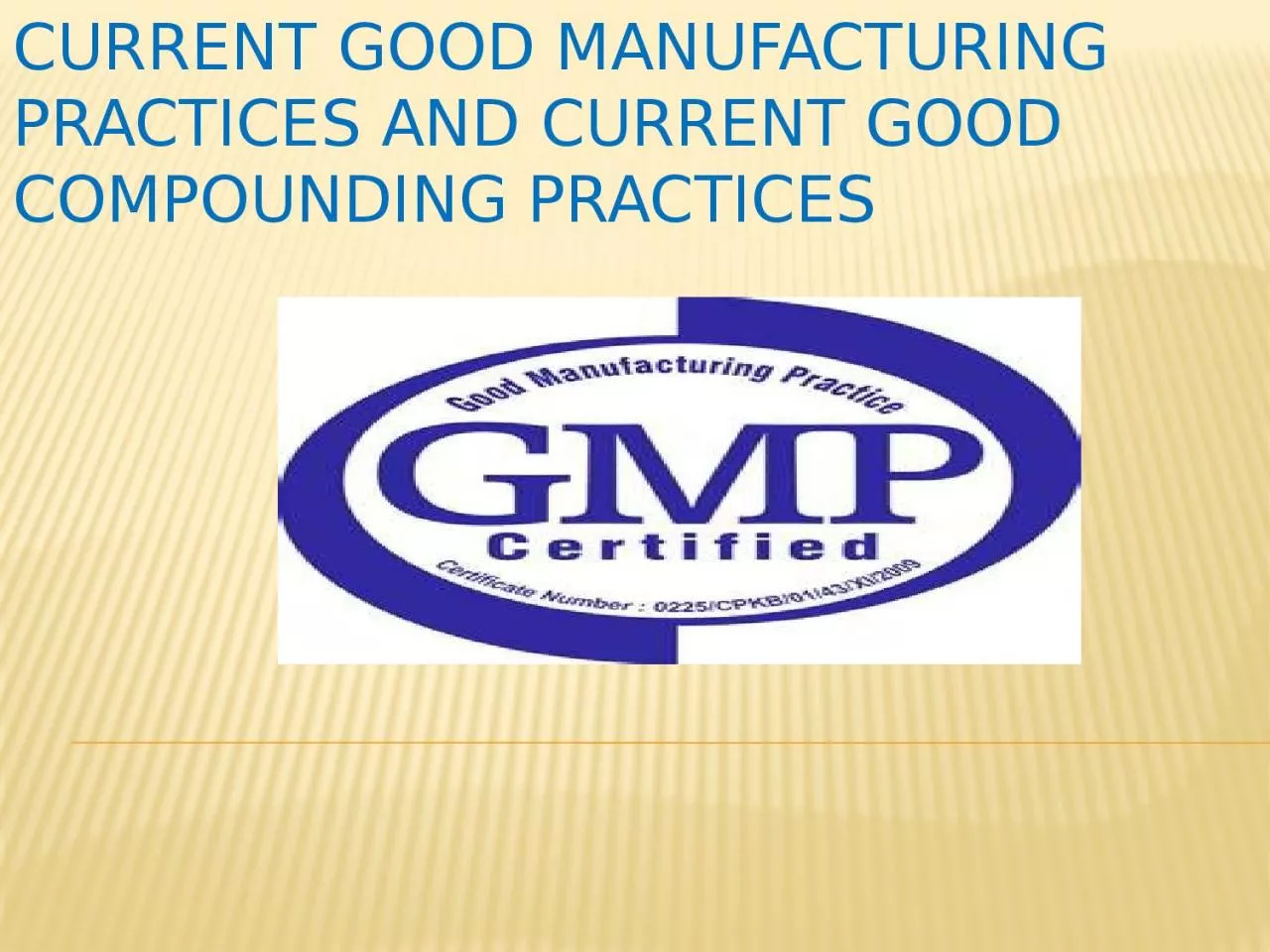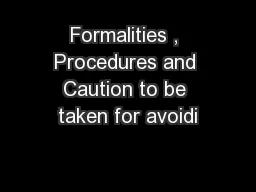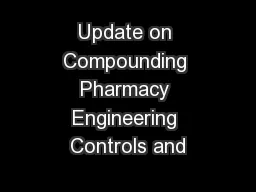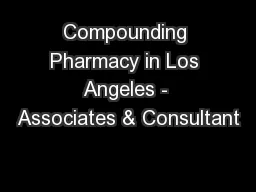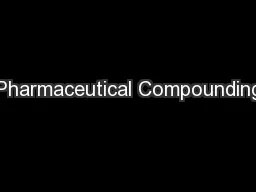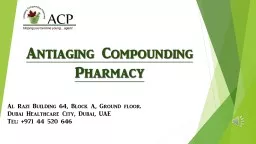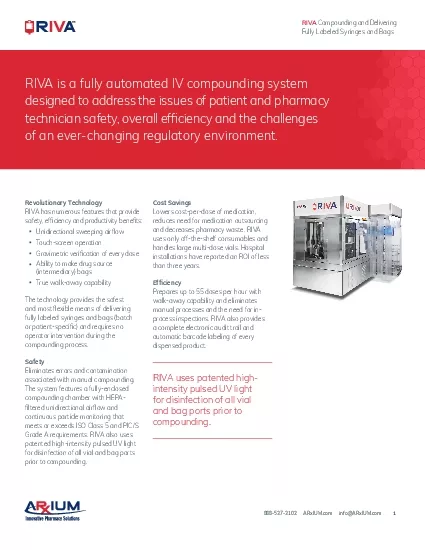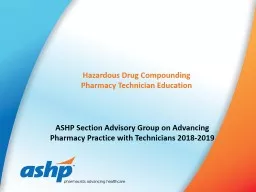PPT-Current Good Manufacturing Practices and Current Good Compounding Practices
Author : amelia | Published Date : 2023-07-26
STANDARDS FOR CURRENT GOOD MANUFACTURING PRACTICE Current Good Manufacturing Practice cGMP or GMP regulations are established by the Food and Drug Administration
Presentation Embed Code
Download Presentation
Download Presentation The PPT/PDF document "Current Good Manufacturing Practices and..." is the property of its rightful owner. Permission is granted to download and print the materials on this website for personal, non-commercial use only, and to display it on your personal computer provided you do not modify the materials and that you retain all copyright notices contained in the materials. By downloading content from our website, you accept the terms of this agreement.
Current Good Manufacturing Practices and Current Good Compounding Practices: Transcript
Download Rules Of Document
"Current Good Manufacturing Practices and Current Good Compounding Practices"The content belongs to its owner. You may download and print it for personal use, without modification, and keep all copyright notices. By downloading, you agree to these terms.
Related Documents

